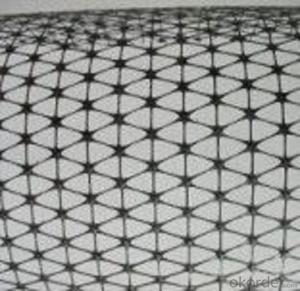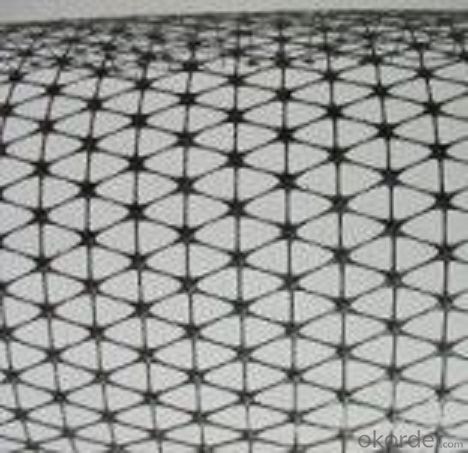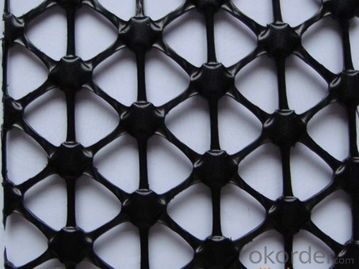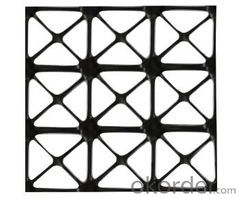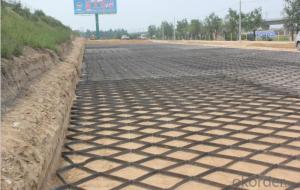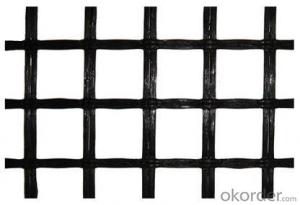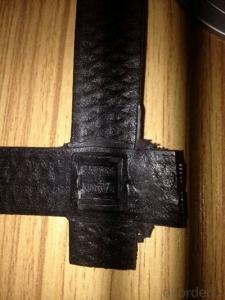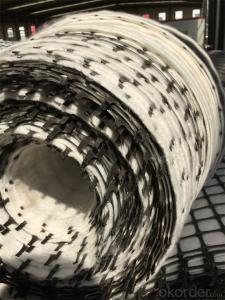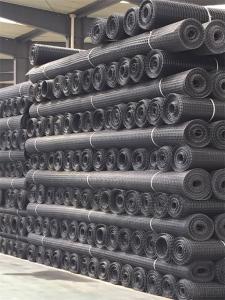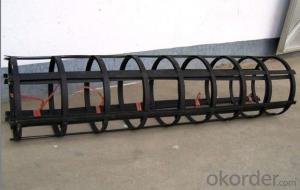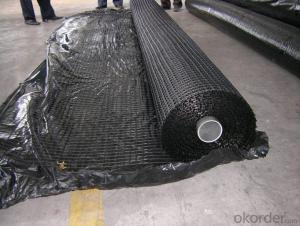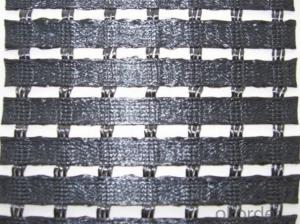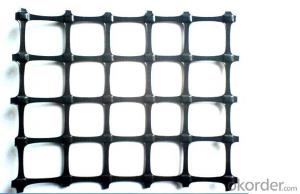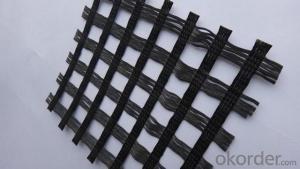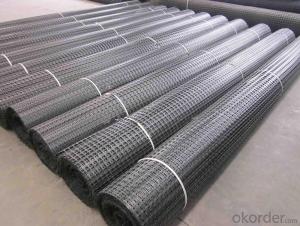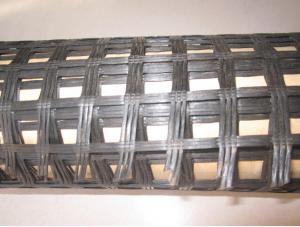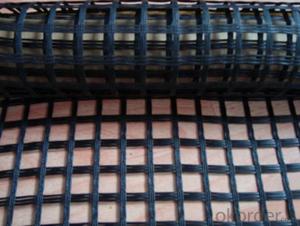HPA Geocells Never Run Multiaxial Plastic Soil Geogrid
- Loading Port:
- Qingdao
- Payment Terms:
- TT OR LC
- Min Order Qty:
- 1 m²
- Supply Capability:
- 100000 m²/month
OKorder Service Pledge
OKorder Financial Service
You Might Also Like
Multiaxial geogrid , made of polypropylene plate , is extruded into sheet and then punched into regular mesh and finally streched into the whole tensile geogrid , triangular mesh is combined orgnaticlly.
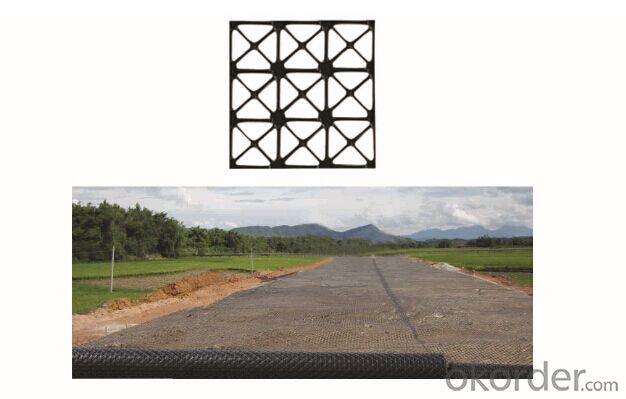
Product introduction:
three axial triangular grid is a new kind of geotechnical reinforcement materials, the latest development because of its stable structure, triangle, two-way than one-way gratings have more reasonable stability, and can bear the load of multiple directions, at the same time more effectively play the role of distributed load, is the ideal choice of the geotechnical engineering reinforcement reinforcement.
Triangular grid main advantages:
1. With the most stable triangular structure, stress is not easy to occur structural deformation;
2. Able to carry more direction load at the same time, not easy to happen node torsion failure;
3. Because of its rectangular section, is not easy to produce and soil slip, the reinforcement effect is better;
4. Because of the node is larger than two-way grille, efficiency is higher, so the node node is not easy to damage;
More than 5. And because of muscle common node, so more saving materials, are more energy efficient.
Three axial triangular grid performance specification (tentative)
The geometric requirements
SAS15
SAS20
SAS25
SAS30
1) the rib length (mm)
32
32
32
32
2) node thickness (mm)
2.2
3
3.8
4.5
3) the rib section shape
rectangular
rectangular
rectangular
rectangular
4) mesh shape
triangle
triangle
triangle
triangle
1) node transfer efficiency (%) or higher
95
95
95
95
2) low strain when the radial tensile modulus (KN/m, @ 0.5% strain) or greater
225
375
430
475
3) quality control tensile modulus (KN/m, @ 2%) or greater
170
230
280
340
4) the mesh stiffness (kg - cm/deg, @ 5.0 kg - cm) or greater
3.0
3.6
5.6
7.8
Carbon black content of p
2%
Note: 1) node efficiency namely load transfer capacity, expressed as a percentage of maximum tensile strength;
2) is according to the radial tensile modulus ISO10319:1996 by measuring the axial plane of the tensile modulus is measured;
3) quality control according to tensile modulus ISO10319:1996 tensile measurement;
4) the mesh stiffness in the horizontal plane, namely to 225 mmx225mm sample center node by applying a torque measurement. Type TG301 geogrid is by our company on the basis of single and double to geogrid, complement each other, independent research and development of low consumption, environmental protection new grille. Type TG301 geogrid is made of PP material by rotating the nose out of a natural law with a mesh plate is arranged, after orientation stretching a forming type terminal grille, we fully consider the in recent years -- new method for calculating the ground settlement, the secant modulus method, repeated calculation with nanjing iwhr geotechnical engineering research institute, many times
Do the destructive and load test to prove:
Type 1. TG301 geogrids stress load, force to disperse bearing rib direction, uniform load distribution
2. The mechanical properties of the single and double to more stable, geogrid tensile modulus and secant durable ability is stronger, its unique network structure is more suitable for the conditions under different environmental stress.
3. The node is gangsu PP welding gratings have absolute stability.
- Q: Can geogrids be used in railway ballast reinforcement applications?
- Yes, geogrids can be used in railway ballast reinforcement applications. Geogrids are commonly used to provide stability and enhance the load-bearing capacity of ballast layers in railway tracks. They can help distribute loads more evenly, reduce differential settlement, and prevent track deformations. By improving the integrity of the ballast layer, geogrids can contribute to the overall performance and longevity of railway tracks.
- Q: What is the effect of soil type on geogrid performance?
- The effect of soil type on geogrid performance is significant. Different soil types have varying properties such as particle size, compaction, and stability, which directly influence the interaction between the soil and geogrid. Cohesive soils like clay may provide better interlocking with the geogrid, resulting in improved load-bearing capacity. On the other hand, granular soils like sand or gravel may offer less resistance to the geogrid. Therefore, understanding the soil type is crucial in determining the appropriate design and installation of geogrids to ensure optimal performance and long-term stability.
- Q: How do geogrids help in reducing construction labor requirements?
- Geogrids help in reducing construction labor requirements by providing reinforcement and stability to the soil, which eliminates the need for excessive excavation, backfilling, and compaction. This saves time and effort for the construction workers, as geogrids can bear heavy loads and prevent soil movement, reducing the need for extensive manual labor.
- Q: Do geogrids have any impact on groundwater?
- Geogrids themselves do not have a direct impact on groundwater. However, they can indirectly influence groundwater flow patterns by improving soil stability and preventing erosion. This, in turn, can potentially affect the recharge of groundwater.
- Q: Can geogrids be used in green wall systems?
- Yes, geogrids can be used in green wall systems. Geogrids provide stability and reinforcement to the structure, helping to support the weight of the green wall system and prevent soil erosion. They can be used to create a strong foundation and provide additional support for the plants, ensuring the success and longevity of the green wall.
- Q: How do geogrids help with slope stabilization?
- Geogrids help with slope stabilization by providing tensile reinforcement to the soil, increasing its overall strength and stability. The geogrids are placed within the soil layers and act as a support system, preventing soil erosion and reducing the risk of slope failure or collapse.
- Q: What are the design guidelines for geogrid-reinforced retaining walls?
- The design guidelines for geogrid-reinforced retaining walls include factors such as the type and strength of the geogrid, wall height, soil properties, and loading conditions. The design should ensure proper connection between the geogrid and the wall structure, adequate embedment of the geogrid in the soil, and appropriate spacing and orientation of the geogrid layers. Additionally, the guidelines may cover construction techniques, stability analysis, and considerations for drainage and backfill materials.
- Q: How many steel wire two-way steel plastic geogrid tensile strength reached 100kn/m
- It depends on the number of steel wires, and the number of wires, and then the,
- Q: Can geogrids be used in mining and landfill applications?
- Yes, geogrids can be used in mining and landfill applications. Geogrids are commonly used in these industries to reinforce soil and provide stability. They help in preventing soil erosion, improving load-bearing capacity, and enhancing overall safety and efficiency in mining and landfill operations.
- Q: Can geogrids be used in coastal erosion control?
- Yes, geogrids can be used in coastal erosion control. Geogrids are often employed as a reinforcement material to stabilize soil and prevent erosion in coastal areas. They can be used to strengthen slopes, retain beach or dune materials, and provide stability to coastal structures like seawalls or revetments. Geogrids are designed to withstand the harsh coastal environment and can effectively reduce the impact of wave and tidal action on the shoreline, making them a valuable tool in coastal erosion control efforts.
Send your message to us
HPA Geocells Never Run Multiaxial Plastic Soil Geogrid
- Loading Port:
- Qingdao
- Payment Terms:
- TT OR LC
- Min Order Qty:
- 1 m²
- Supply Capability:
- 100000 m²/month
OKorder Service Pledge
OKorder Financial Service
Similar products
Hot products
Hot Searches
Related keywords
